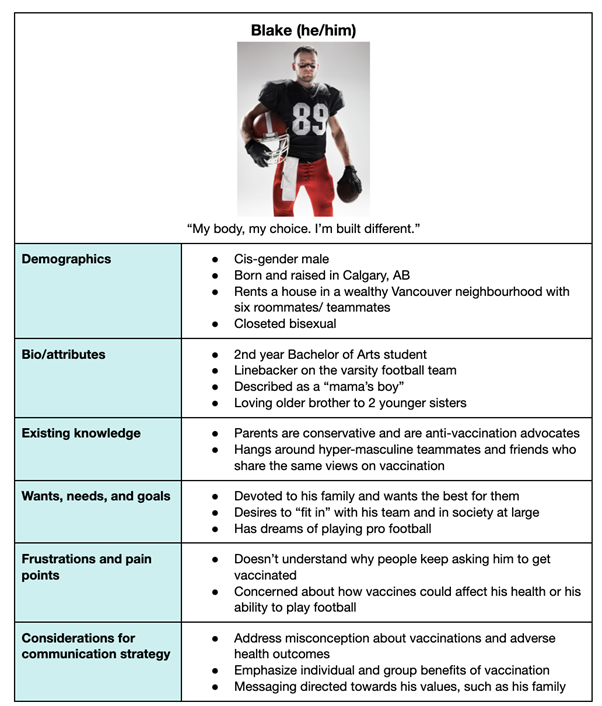By Tiffany Chiu, guest editor
Do you ever feel like your communication efforts fall on deaf ears? You are not alone.

Image: Freepik.
Most scientists want to share their research to make a difference in society. But many struggle to put that desire into practice. They share information that they believe is important, rather than understanding and addressing their audiences’ needs. By communicating the evidence that shaped their own beliefs and attitudes, they assume they can change the beliefs of their audience.
Decades of research has shown that effective health and science communication is not only about delivering information, but also about fostering understanding, building trust, cultivating engagement, and stimulating action. And achieving these goals begins with understanding your audience.
In this post, let’s explore what it means to understand your audience using three simple strategies.
1) Tailor your communication to a specific audience
Imagine that you are a public health professional working on a campaign to increase flu vaccination rates among university students. Your success depends on your ability to engage with individuals of different backgrounds and levels of health knowledge. Would a one-size-fits-all approach do the trick? Unlikely!
Instead, you will have to consider students’ diverse interests and demographics. What are they studying? What is their primary language? The answers to such questions will be essential in developing your campaign.
Let’s look at this approach with an example for your campaign. Suppose you plan to put up posters to advertise an upcoming vaccination clinic. Posting infographics in campus hubs may appeal to a busy undergraduate student. However, a graduate student may not frequent these spaces as often. What approach could you use to ensure your information reaches more graduate students?

Image: katemangostar on Freepik.
We need to customize our approach just like healthcare professionals tailor treatment plans to their patients and researchers adapt their methodologies to recruit and learn from different types of participants. As health and science communicators, we need to tailor our strategy depending on our audience’s unique needs. This will ensure that our messages resonate with our intended audience.
2) Use a persona to represent your audience
Enter the persona: a powerful tool for understanding an audience. Think of personas as fictional characters that represent your target audience. They bring together key demographic information, behaviours, needs, and beliefs in a format that is easy to understand and use. Creating personas also adds a human touch to the group you aim to communicate with, which can help you engage on a deeper, more authentic level.
To create a persona, think of one person who may be part of your target audience. What keeps them busy day-to-day? What traits make them unique? Once you have a general idea, it will be easier to fill in a persona template (like this one) and start getting to know your audience.
To see this in practice, consider Blake, one of many personas you might create to represent a specific group of students on campus. The combination of the following qualities paints a distinct picture of who he is. Guided by this picture, you can then ask yourself: “How can I best communicate with a student like Blake”? The answer will shape the approaches you use to reach a target audience that shares these traits.
3) Use a culture-centered approach
Culture is not something a person has; rather, it is a dynamic social construct that encompasses a particular group’s shared beliefs and values. Culture is interwoven within our everyday lives by shaping individual and community-wide morals, norms, and actions.

Image: javi_indy on Freepik.
When groups of people are not allowed a place within society, they are marginalized. Marginalization may occur based on race, gender identity, or other aspects of culture. Marginalized groups try to express their needs but may not heard. There can be many marginalized groups in one area, such as a university campus.
To communicate more effectively, especially with marginalized groups, we can use a “culture-centered approach”. This allows these communities to engage in dialogue about their needs. Using a culture-centered approach invites collaboration and creative ideas to address health and science challenges. It allows communities to take ownership of their own decision-making, and, ultimately, their wellbeing.
A culture-centred approach can also help you refine a persona. A person’s culture can play a role in what they believe, what they know, and how they like to receive information.
For example, for your immunization campaign, you would want to consider that students from different regions or religions may have different attitudes or standards toward immunization. How would you navigate these differences to connect your audience with your key message?
Addressing these differences and incorporating diverse perspectives will help make the vaccination campaign more effective.
Putting it into practice: keeping your audience front and centre
So, what’s next? You have taken the time to understand your audience using these three strategies. You have created a communication plan to promote flu vaccinations in ways that resonate with university students. And your campaign has achieved a record-high rate of vaccinations across campus. Well done!
Of course, few real-world communication campaigns will go as smoothly as the example above. But understanding your audience is an important first step in the right direction. As science and health communicators, we have a duty to make sure the information we share is useful and relevant to diverse audiences.
Asking “who?” before “how?” will help bridge the gap between knowing and understanding, and may make all the difference.
To summarize:
- Effective communication requires understanding your audience.
- 3 tips to understand your audience:
1) Tailor your communication to a specific audience
2) Use a persona to represent your audience
3) Use a culture-centered approach
Tiffany Chiu is a Master of Public Health Student at the University of British Columbia’s School of Population and Public Health. Through her studies, she has found her passion in promoting health equity and uplifting marginalized communities.
Feature image by storyset on Freepik





